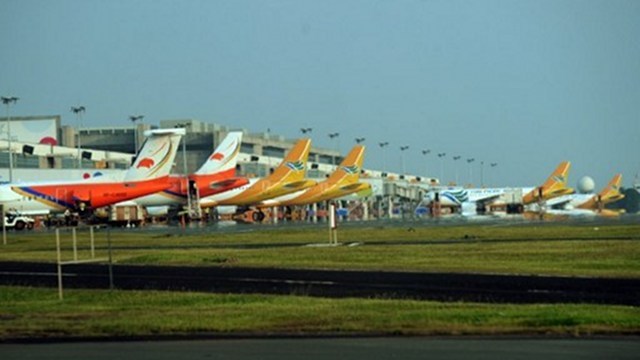Eight in 10 Filipinos fear possible armed conflict between the Philippines and China over the disputed Panatag (Scarborough) Shoal, a latest survey by the Social Weather Stations (SWS) showed.
The level of “worry about armed conflict with China in the disputed islands of Scarborough Shoal” remained high at 84 percent in March, with 49 percent saying that they “worried a great deal” and 35 percent saying they were “somewhat worried,” the SWS said.
The survey was conducted from March 20 to 23, using face-to-face interviews of 1,200 respondents nationwide.
The finding was consistent with that of previous polls in September 2012, September 2013, and June 2014, the SWS noted.
Panatag or Scarborough Shoal, locally called Bajo de Masinloc, is located some 125 nautical miles off Zambales.
Fewer Filipinos support the government’s actions on the Scarborough Shoal standoff, according to results of the survey, which were published in the newspaper BusinessWorld yesterday.
Headlines ( Article MRec ), pagematch: 1, sectionmatch: 1
In response to the dispute, Manila filed an arbitration case before the International Tribunal for the Law of the Sea.
The SWS poll found 49 percent of respondents saying they strongly or somewhat approve of the steps taken by the government.
This was lower than the 62 percent and 65 percent recorded in the SWS polls in June 2014 and September 2013.
Public approval of the government’s actions declined in all areas of the country, except in the Visayas, where those who expressed support outnumbered those who didn’t (55 percent versus 37 percent).
But the numbers were generally tied for Metro Manila (48 percent-48 percent), balance Luzon (48 percent-49 percent) and Mindanao (45 percent-47 percent), the SWS said.
The March 2015 survey has sampling error margins of plus or minus three percentage points for national and plus or minus six percentage points for area percentages.
The standoff started in April 2012 when the Philippine Navy’s BRP Gregorio del Pilar apprehended Chinese poachers in the area.
Since then, China has maintained its presence through its coast guard, barring local fishermen’s access to the uninhabited shoal.
Philippines drops in global peace ranking
The Philippines has dropped seven places in a global peace ranking to 141 out of 162 countries because of the potential for conflict in the South China Sea and the Masasapano tragedy in January in which 44 national police commandos were killed in fighting with Moro Islamic Liberation Front (MILF) rebels.
In the Global Peace Index 2015 report issued on Wednesday by the Institute for Economics and Peace, the Philippines was in last place in the ASEAN rankings and in penultimate place in the Asia-Pacific rankings, just ahead of North Korea.
The South China Sea remains a potential area for conflict, with countries involved in the dispute (China, Vietnam and the Philippines) all showing a worsening of their scores in the 2015 index, the report said.
Although the likelihood of further military skirmishes in the disputed waters is high, a large-scale military engagement remains unlikely, the report said.
“The Philippines suffered from an escalation of internal conflicts between the government and rebel groups occurring late in the measurement period,” the report added.
It noted Indonesia was the most improved country in the Asia-Pacific region, rising 12 places to 46th in the overall rankings in 2015 due to a curb in the level of violent crime and a reduced impact of terrorism.
The Global Peace Index measures the state of peace in 162 countries according to 23 indicators in three main categories – ongoing domestic and international conflict, societal safety and security and militarization – that gauge the absence of violence or the fear of violence.
According to the index, since last year 81 countries have become more peaceful while 78 have deteriorated.
The Philippines scored 2.462 in the index and was among the countries with “low” state of peace. The report used a scale of one to five, with one being the highest in terms of state of peace.
Last year, the Philippines was in 134th place with a score of 2.456.
The Philippines’ 2015 global ranking paled in comparison with its ASEAN neighbors Singapore which was in 24th place, Malaysia (28), Laos (41), Indonesia (46), Vietnam (56), Cambodia (111), Thailand (126) and Myanmar (130). – With Jose Katigbak

